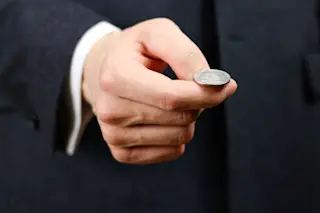When Italy’s national soccer team took on the Soviet Union in the semi-finals of the European Championship in 1968, the score was 0-0 at the end of the game and a further period of extra time failed to separate the two sides.
The rules of the time dictated that in these circumstances, the game should be decided by the toss of a coin. Italy’s captain Giacinto Facchetti called correctly, and Italy proceeded to the final, which they eventually won.
A coin toss is often considered the fairest way to settle an otherwise intractable question. The process involves using your thumb to launch a coin into the air and then catching it again. The chances of it landing on one side or the other — heads or tails — are 50:50, which is what makes the process fair. Or so everyone had thought.
Enter František Bartoš, at the University of Amsterdam ...














